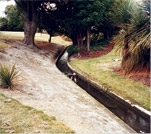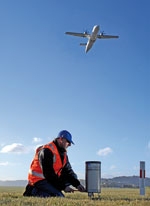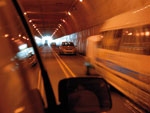PDF of this article (106 KB)



Free access to Nationally Significant Databases
You can now download millions of pieces of information about New Zealand’s climate, freshwater, and other environmental factors, thanks to an initiative by NIWA.
The new free data-access policy came into effect in July and covers archived data on climate, lake level, river flow, sea level, water quality, and freshwater fish contained in NIWA’s nationally significant databases, to which many organisations contribute.
Barry Biggs, NIWA’s General Manager of Environmental Information, says this provides many new learning and research opportunities for school and university students. The policy covers an impressive array of archived data. The National Climate Database alone currently contains over 250 million individual measurements, including records dating back to the 1850s.
If you need customised formats or non-standard data, you may be charged for the labour involved. There will also continue to be limits on access to some data which are not owned by NIWA. Funds for maintaining the nationally significant databases come from the Foundation for Research, Science & Technology.
cliflo.niwa.co.nz
- National Climate Database: rain, temperature (earth & air), wind, soil moisture, evaporation, solar radiation, sunshine, pressure, humidity
edenz.niwa.co.nz
- National Hydrological Database: river flow, river level, lake level, rainfall
- National Water Quality Network: cloud cover, water temperature, dissolved oxygen, water clarity, stream flow, periphyton estimates, invertebrates
- Sea Level Monitoring Network
fbis.niwa.co.nz
- Freshwater Biodata Information System: algae, fish, invertebrates, aquatic plants
For further information, contact: Dr Barry Biggs
Urban tunnels and community health
The experience of driving through the major Australian cities is being transformed. Huge urban motorway projects have been completed in Sydney and Melbourne and more are underway or planned for Melbourne and Brisbane. This development has been made possible by the construction of tunnels. Sydney’s Orbital Motorway now includes eight urban tunnels totalling 14 km, and the Cross City tunnel runs more than 2 km under the downtown area. Plans for up to 20 km of tunnels have been suggested for central Brisbane.
As well as improving journey times and reducing congestion, tunnels can provide for a healthier, more attractive urban environment by reducing traffic noise, air pollution, and accident risk at the surface. However, community concerns have grown into a vociferous anti-tunnels lobby in Australia over the issue of air quality. Traffic pollutants from many of the tunnels are released into the local environment via stacks, and many residents have come to believe that these releases are affecting their health. Extensive research has focused on airquality measurements and health surveys, but not on how the two are actually related.
Last year, Australia’s Minister for Health and Ageing sought advice on how the air-quality health risks associated with tunnels should best be managed. NIWA scientist Ian Longley and Francesca Kelly of Environ Medical Services were engaged to review the levels of pollutants in and near tunnels, the risks to health of residents and tunnel-users, and what can be done to manage that risk. They determined that community fears were not unfounded but that the health risk was negligible. They did note, however, a small risk that users of some tunnels could be exposed to unhealthy levels of pollutants, especially in congested conditions or for more vulnerable people like asthmatics or those with cardiovascular conditions.
Earlier this year, Ian and Francesca presented their findings at a workshop in Canberra and revised their report in discussion with the Australian research community. Their recommendations included:
- Reduce health risks within tunnels by applying tighter emission standards to Australian vehicles in general.
- Develop a new exposure limit for nitrogen dioxide (NO2) for tunnel users. Applying this limit would also provide some protection against the effects of particles emitted by traffic. Together, these pollutants are related to various respiratory and cardiovascular conditions, and reduced lung development in children, and the NO2 can increase asthmatics’ allergenic response to particles.
These and other technical recommendations in the report may be of value here in New Zealand, where several new road tunnels are currently on the drawing board.
Following technical editing, the full report will be available at www.nhmrc.gov.au
For further information: Dr Francesca Kelly, 09-920 9778, [email protected]

